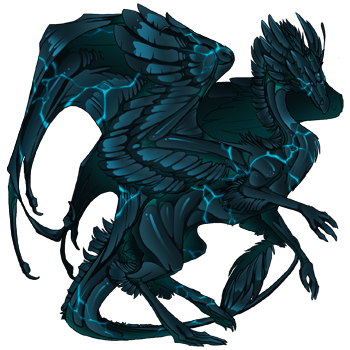

Megalonaias
(#81983567)
Level 1 Skydancer
Click or tap to view this dragon in Predict Morphology.
Energy: 37/50

Expand the dragon details section.
Collapse the dragon details section.
Personal Style
Apparel
Skin
Scene
Measurements
Length
4.58 m
Wingspan
3.58 m
Weight
742.53 kg
Genetics
Abyss
Metallic
Metallic
Abyss
Alloy
Alloy
Cerulean
Veined
Veined
Hatchday
Breed
Eye Type
Level 1 Skydancer
EXP: 0 / 245


STR
4
AGI
5
DEF
4
QCK
9
INT
9
VIT
4
MND
9
Lineage
Biography


Washboard

Megalonaias gigantea
Freshwater mussels of North America are currently
highly endangered. Their habitat has been affected by siltation, erosion, polluted runoff, impoundment, channelization, and habitat fragmentation. Due to these environmetal changes, even common and widespread species have declined dramatically from historic levels. Mussels are important indicators of aquatic ecosystem health. Their complex life cycle requires a healthy fish community, stable substrates, and relatively clean water. Changes in water quality, channel stability, or fish density and diversity are usually reflected by a decline in abundance or a loss of species within the mussel community. Monitoring the health and diversity of the mussels within a drainage system is an important tool in aquatic ecosystem management.
Mussels have a complex and distinctive reproductive cycle. Males release sperm into the
water, which are drawn in by females through their incurrent siphon. Fertilized eggs are brooded in the female's gills, where they develop into tiny larvae called glochidia. Studies in the upper Mississippi River suggest that the washboard is tachytictic, with females brooding their young short-term before they are released as glochidia in October. Once the glochidia are expelled from the female's gills, they attach to fish gills or fins by clamping onto them with their valves. The glochidia live as parasites on the host fish until they develop into juvenile mussels, at which point they detach from the fish and fall to the streambed as free-living mussels. Host fishes for the glochidia of the washboard have been verified as the green sunfish (Lepomis cyanellus), black bullhead (Ameiurus melas), and the channel catfish (Ictalurus punctatus) (Woody and Holland-Bartells 1993).
The washboard is a large river species historically found in the Minnesota and St. Croix
rivers and in the Mississippi River below St. Anthony Falls (Grier 1922; van der Schalie and van der Schalie 1950). It was likely always rare in the Minnesota River, where surveys by Bright et al. (1990) found only 2 dead shells and no live individuals. The washboard is now very rare in the Mississippi (Thiel 1981; M. Davis, Minnesota DNR, pers. comm.) and St. Croix rivers (Heath 1990), comprising only 1% of the mussels identified by Hornbach et al. (1995). The washboard was listed as a threatened species in Minnesota in 1996.
The shell of the washboard can reach up to 20 cm (8 in.) long, and it is rectangular with
valves that are thick and heavy. The posterior wing often has numerous ridges, especially in younger individuals, and the beak sculpture is comprised of well-developed, double-looped ridges. The entire surface of the shell is heavily sculptured with fine ridges and folds in the first few years of growth. The ridges become more pronounced with age. The outside of the shell is brown or black, and rayless. The pseudocardinal and lateral teeth are heavy, and the inside of the shell is white. The beak sculpture distinguishes the washboard from the rock pocketbook (Arcidens confragosus) and the threeridge (Amblema plicata). Its thick shell and heavy teeth also help distinguish it from the rock pocketbook.References:
Hartfield, E. 2004. FRESHWATER MUSSELS OF
NORTH MISSISSIPPI NATIONAL WILDLIFE REFUGE
COMPLEX. U.S. Fish and Wildlife Service Ecological Services.
COMPLEX. U.S. Fish and Wildlife Service Ecological Services.
MDNR
Click or tap a food type to individually feed this dragon only. The other dragons in your lair will not have their energy replenished.
Feed this dragon Insects.
This dragon doesn't eat Meat.
This dragon doesn't eat Seafood.
Feed this dragon Plants.
Exalting Megalonaias to the service of the Plaguebringer will remove them from your lair forever. They will leave behind a small sum of riches that they have accumulated. This action is irreversible.
Do you wish to continue?
- Names must be longer than 2 characters.
- Names must be no longer than 16 characters.
- Names can only contain letters.
- Names must be no longer than 16 characters.
- Names can only contain letters.














